Drawings
A drawing is an image that reproduces a motif only with lines and strokes, often in a simplified way. This distinguishes drawing from painting, which depicts the motif using colors and hues. An artistic drawing is usually a freehand drawing, which most often is monochrome. The strict classical view holds that a drawing emphasizes the outlines of a given motif. These lines can be supplemented with additional lines (usually hatching) so that a spatial impression is created.
In contrast to this classical view, Eggert Gustavs labored over his pencil drawings with artistic mastery from early on, often down to the smallest detail. Numerous sketches, which he initially made when searching for a motif as a template for later work, reveal great attention to detail and precision.
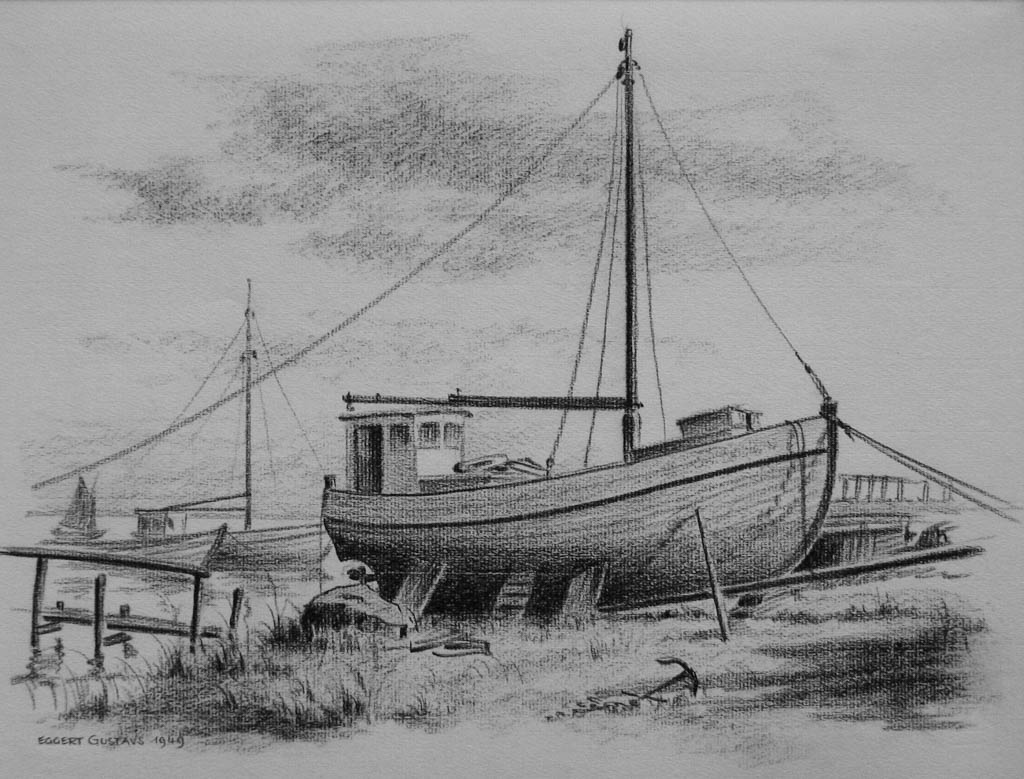
Fishing boat, pencil drawing 1949
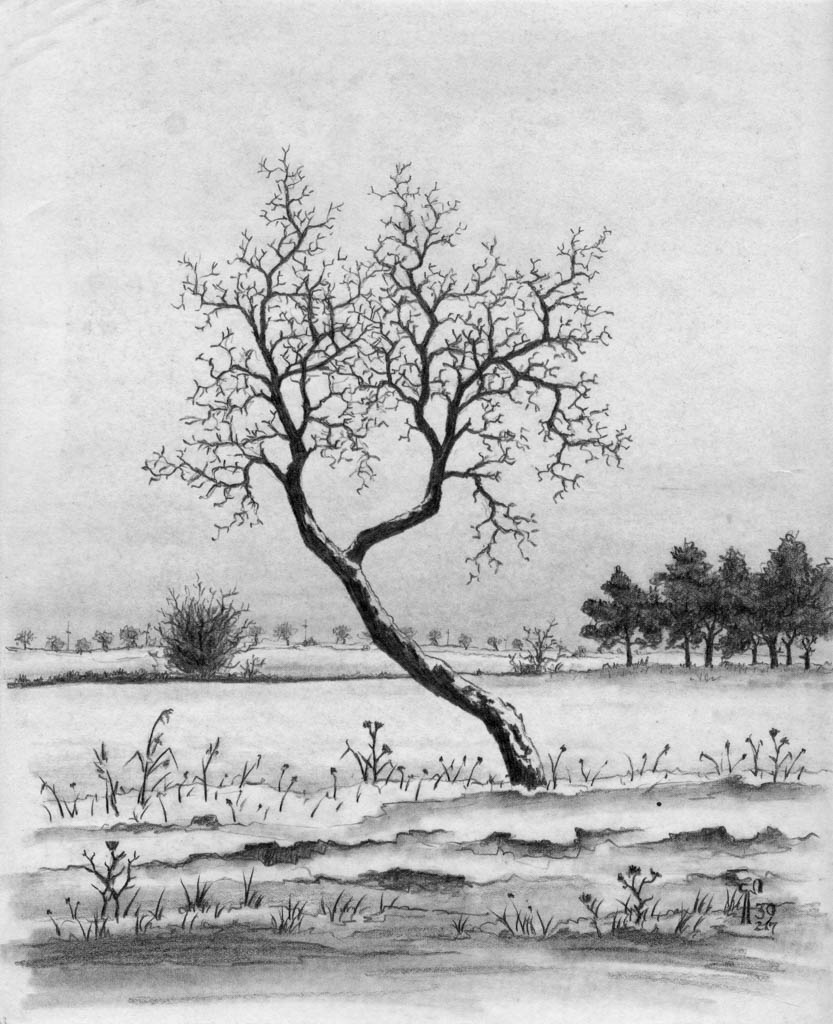
Märkisch landscape, pencil drawing 1939
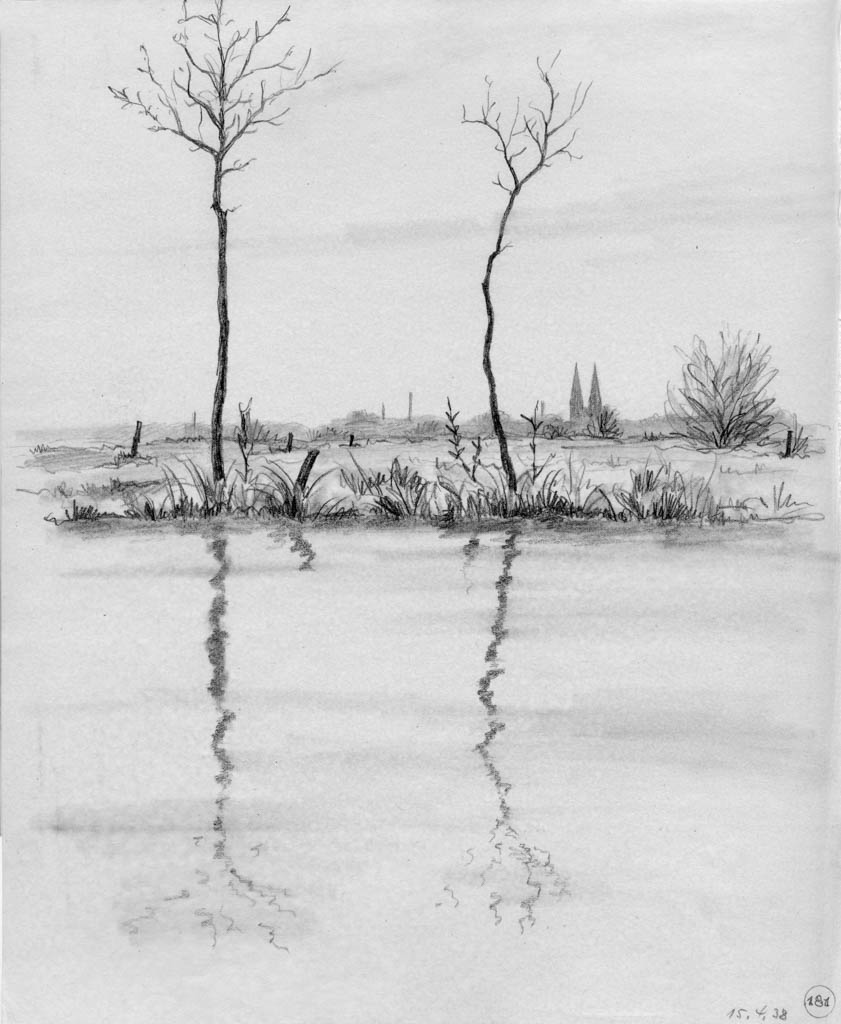
View of Neuruppin, pencil drawing 1938
Pen drawings
A pen drawing is a manual drawing made with reed pens, quills from bird feathers, or steel nibs using ink, Indian ink, or sepia (cuttlefish ink).
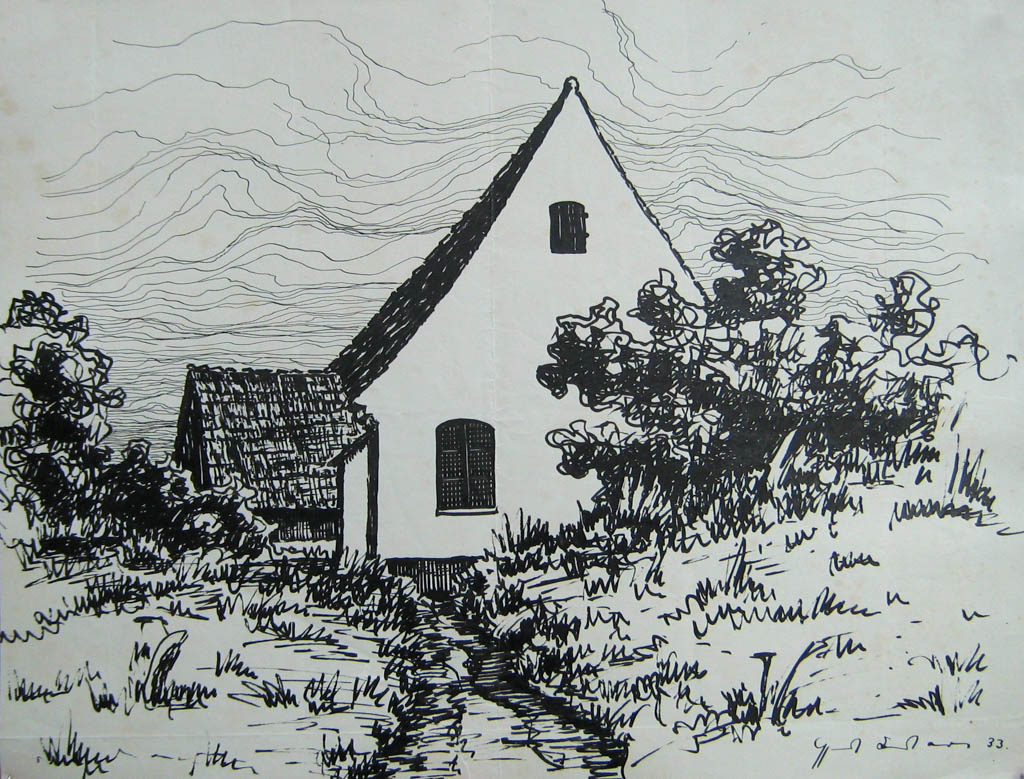
Island church, pen drawing 1933
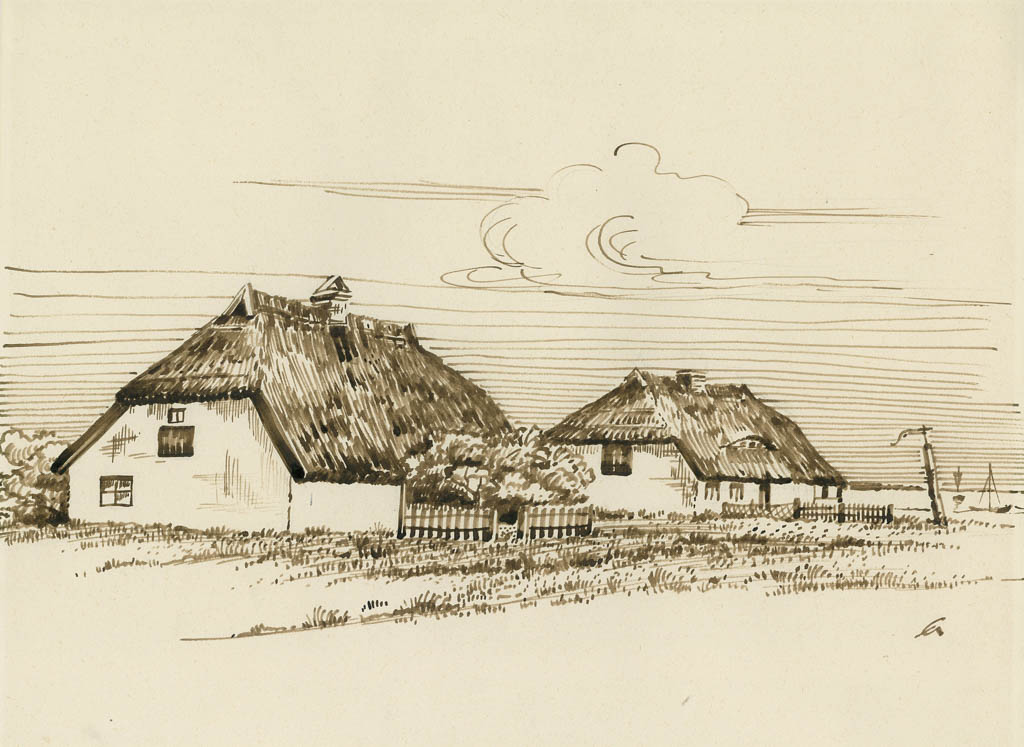
Fisherman's houses in Neuendorf, pen drawing about 1948
Watercolors
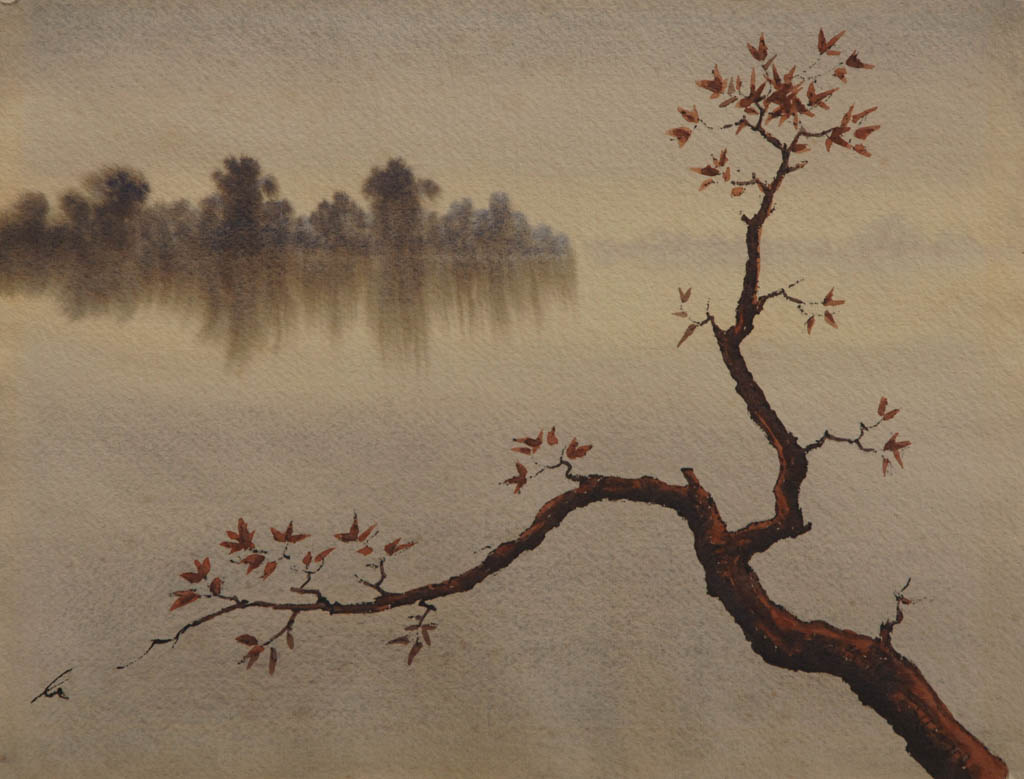
View of lake Großer Wummsee
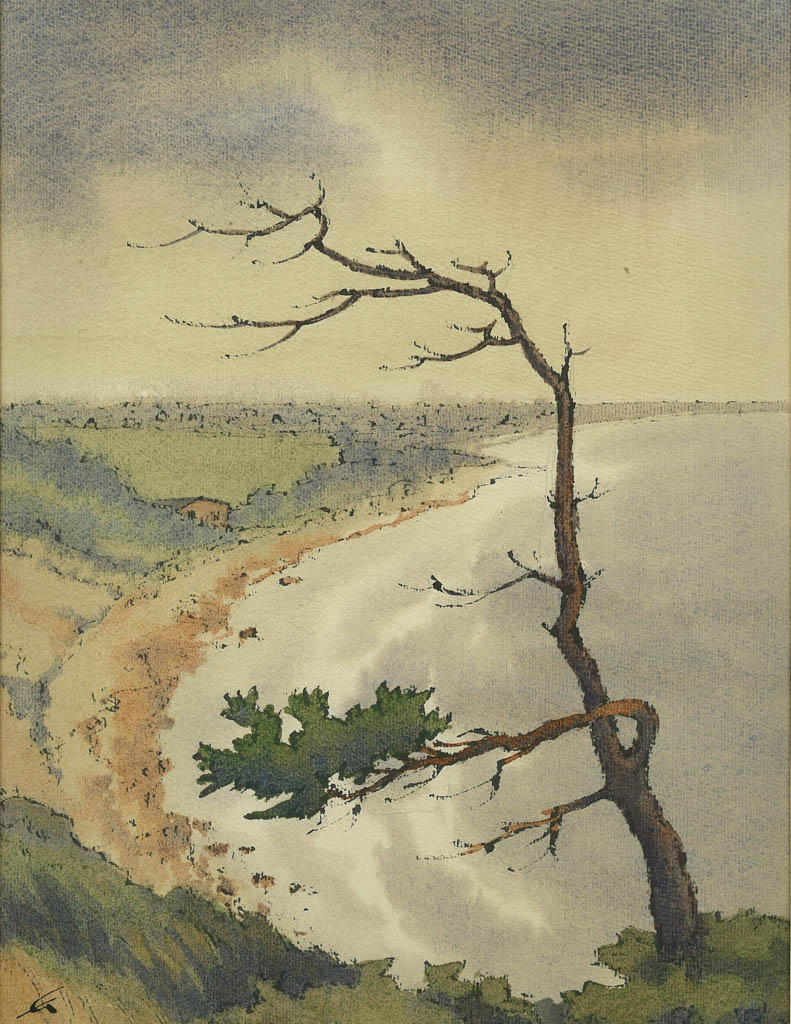
West coast near Kloster, mixed media
A watercolor is a painting made with water-soluble transparent, not opaque colors.
Painting with water-soluble colors is one of the oldest painting techniques. As early as the Paleolithic Period, many cave paintings were created with the help of simple brushes and hematite dissolved in water and fat or with dissolved charcoal. Old masters such as Albrecht Dürer and Rembrandt were masters in watercolor painting, but used it primarily for study purposes or to prepare oil paintings. At that time, watercolors were not regarded as independent works of art.
Though a finished picture often appears light, almost playful to the viewer, watercolor painting is much more difficult to execute than techniques in which opaque colors are used. Once a brushstroke is made in a watercolor painting, it is next to impossible to correct it. Also, in contrast to oil paints, the difference between wet and dried paints is great, because the intensity and luminosity of the colors is much lower when dry.
Flat wash and glaze techniques are typical of watercolor painting. For glazing, the thinned paint is applied with a very damp brush to avoid clear distinctions and to make the contours merge smoothly into each other. However, an image can also consist of just brushstrokes with water-soluble colors. This is also referred to as a brush drawing, a forerunner of watercolors, which may also be monochrome.
The right paper must be absorbent with a rough texture, yet smooth enough so that the color pigments dissolved in water can be evenly distributed and will adhere when dry.
Eggert Gustavs often combined pen drawing with watercolor or brush drawing (mixed media). In some of his pictures, one can see that he moistened the paper in selected areas before applying color to make the colors run into each other. For example, he created impressive atmospheric water reflections in this way. To master this uncontrollable wet-on-wet technique takes tremendous skill in painting background, color selection, and brushstroke.
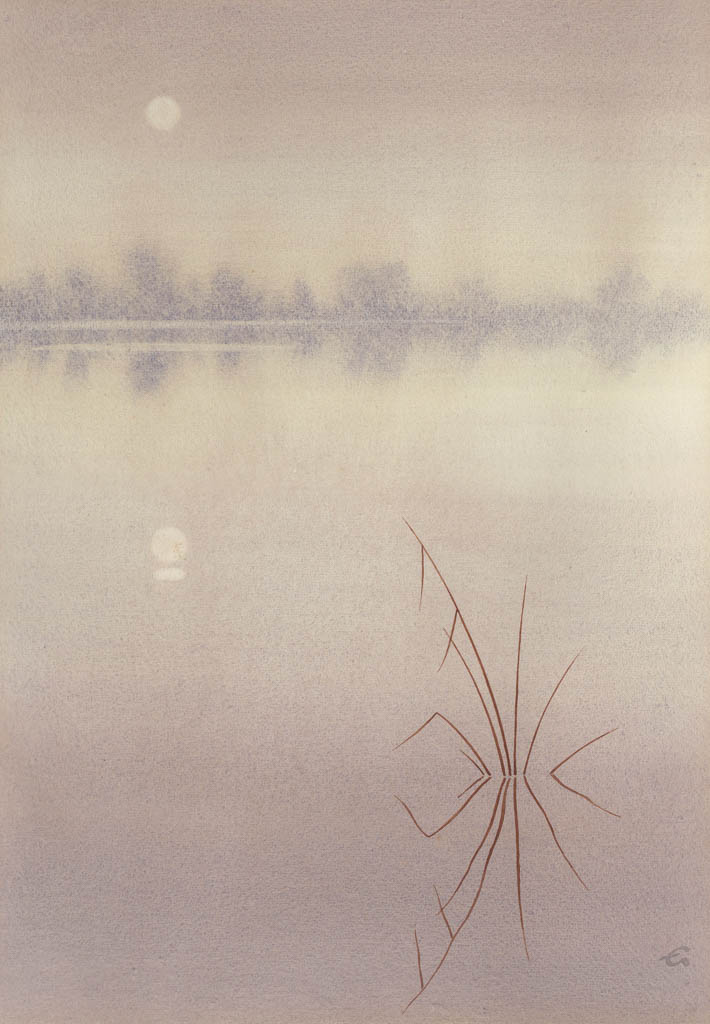
Tranquility, 1953
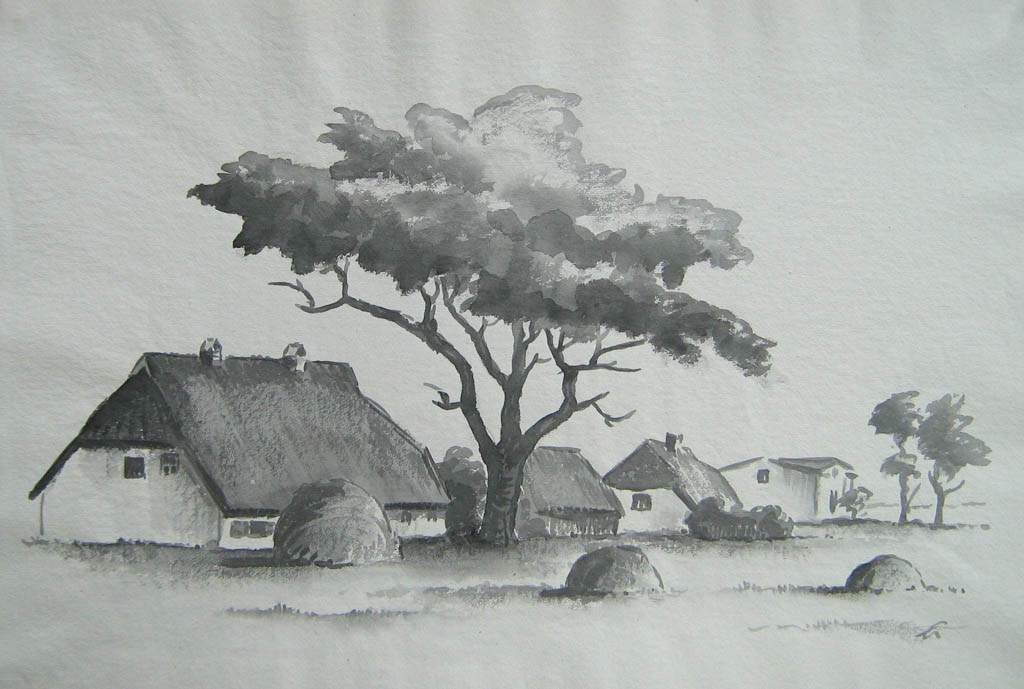
Neuendorf, brush drawing
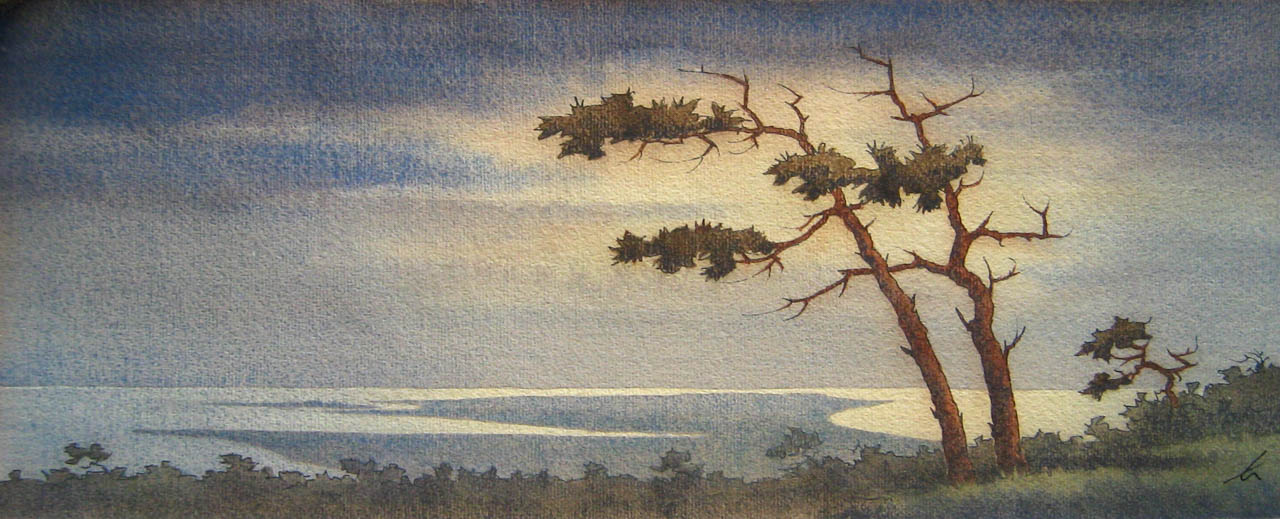
Oil paintings
As the oil in oil paintings dries, it hardens into a solid layer through oxidation. Oil paints allow brushstrokes to be placed next to and on top of each other, without having the colors run into each other. It is therefore possible to make corrections. Unlike watercolors, oil paints retain the vibrancy and intensity of their colors even after drying.
Thus painting with oil allows the image to be carefully developed and makes many layers of correction possible. Images of great depth and inner vitality can be painted in this way. We know that Titian applied up to 150 layers. It is noteworthy that Eggert Gustavs preferred predominantly delicate colors in his oil paintings.
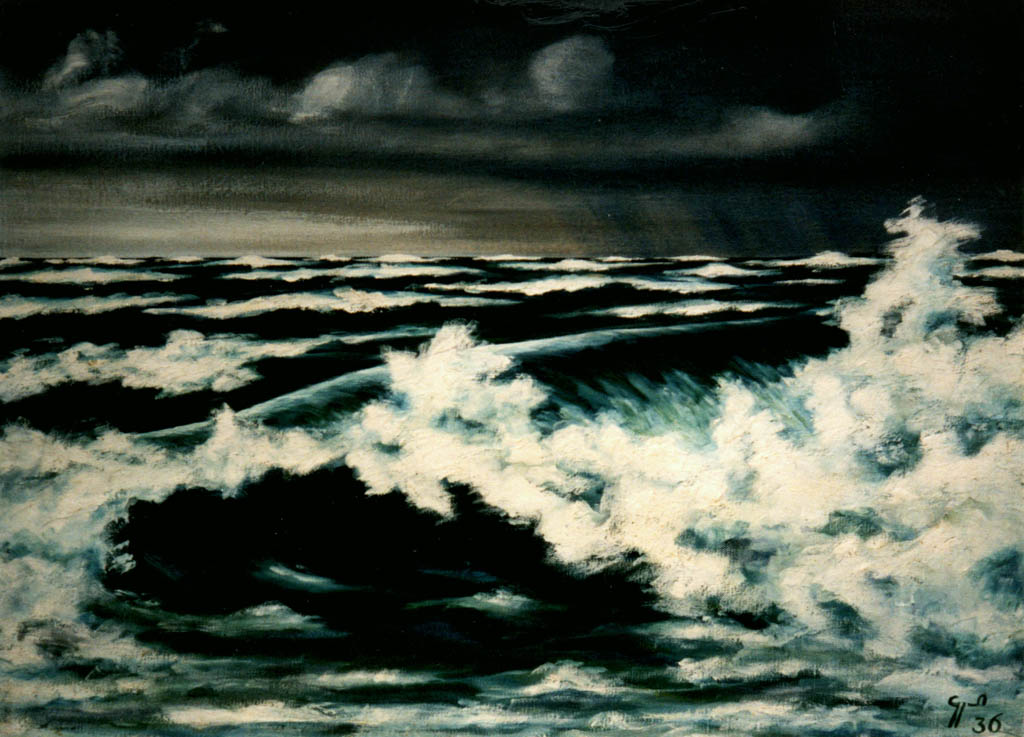
Wave, 1936
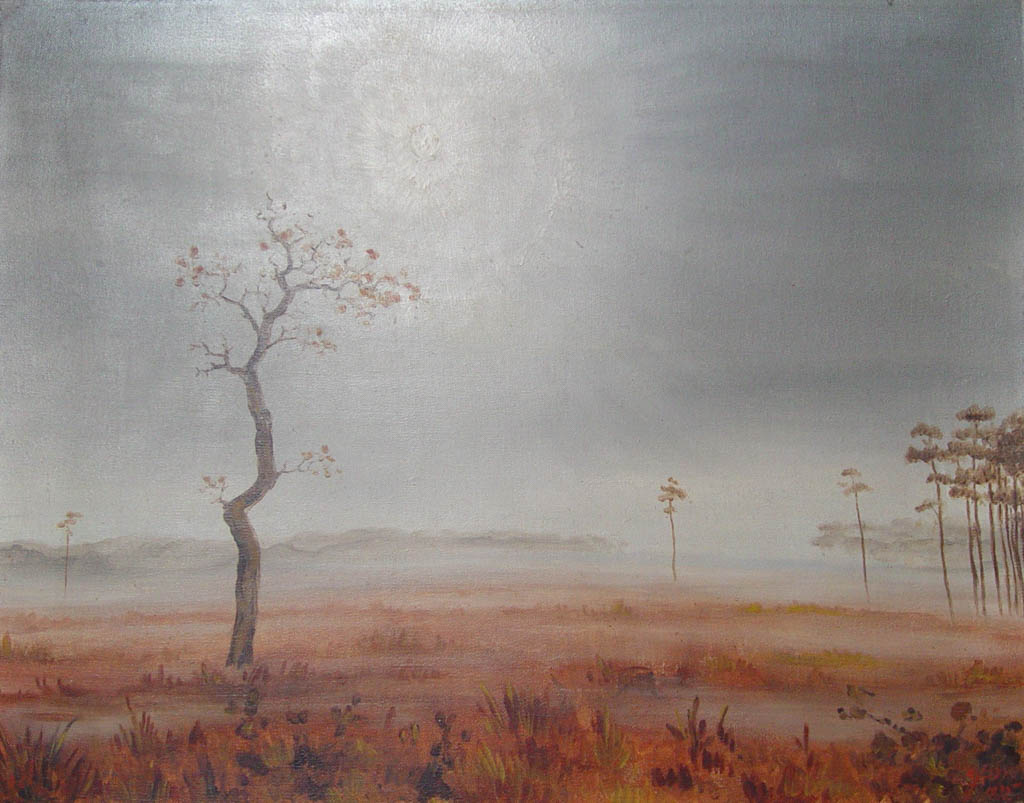
Ruppin heath, 1938
Pastel
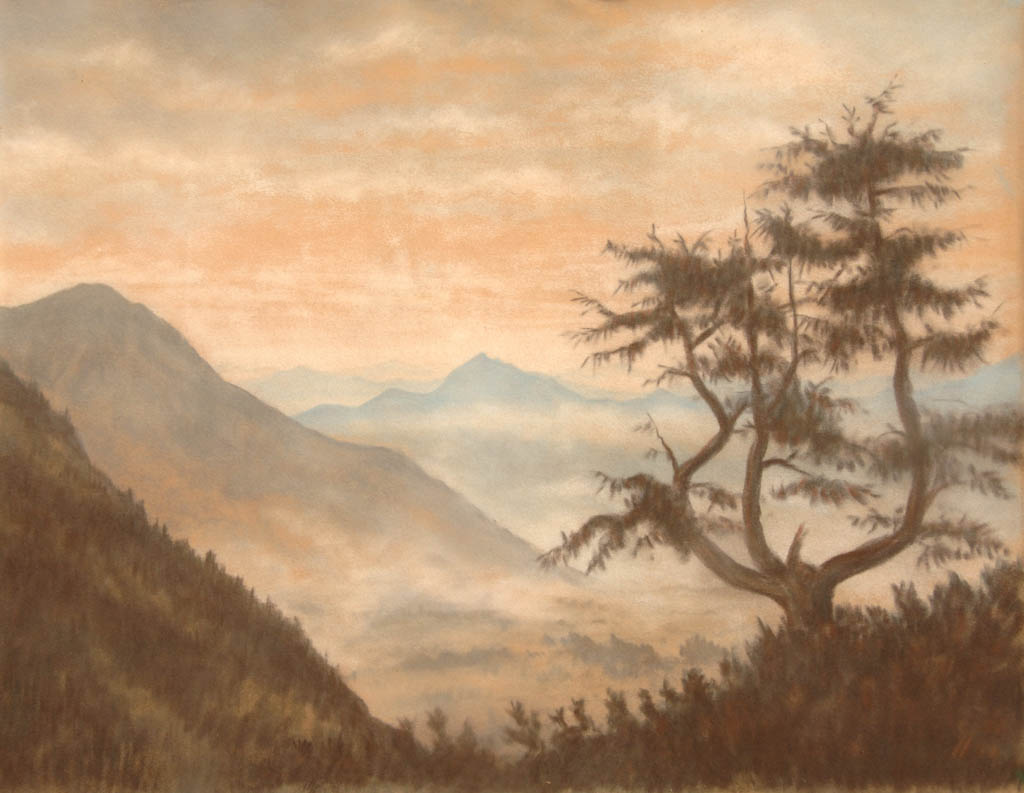
Tyrol, about 1934
In a pastel picture, dry, dusty color pigments are applied to mostly rough paper using soft colored pencils (pastel pencils). The colors can be easily mixed on the paper with fingers, special brushes, or rolled-paper stumps such as tortillons. This allows the artist to create magic on paper with delicate color transitions and new shades of color. Because the adhesion of the color dust pigments to the paper is weak, the picture is then sprayed with a fixative. Even so, pastels remain very sensitive to touch and vibration.
For his pastel pictures, Eggert Gustavs used tinted papers with a velour surface. This additional tool allowed him to influence the effect of the pictures to a greater extent and to create pictures with a particularly velvety-matte surface.
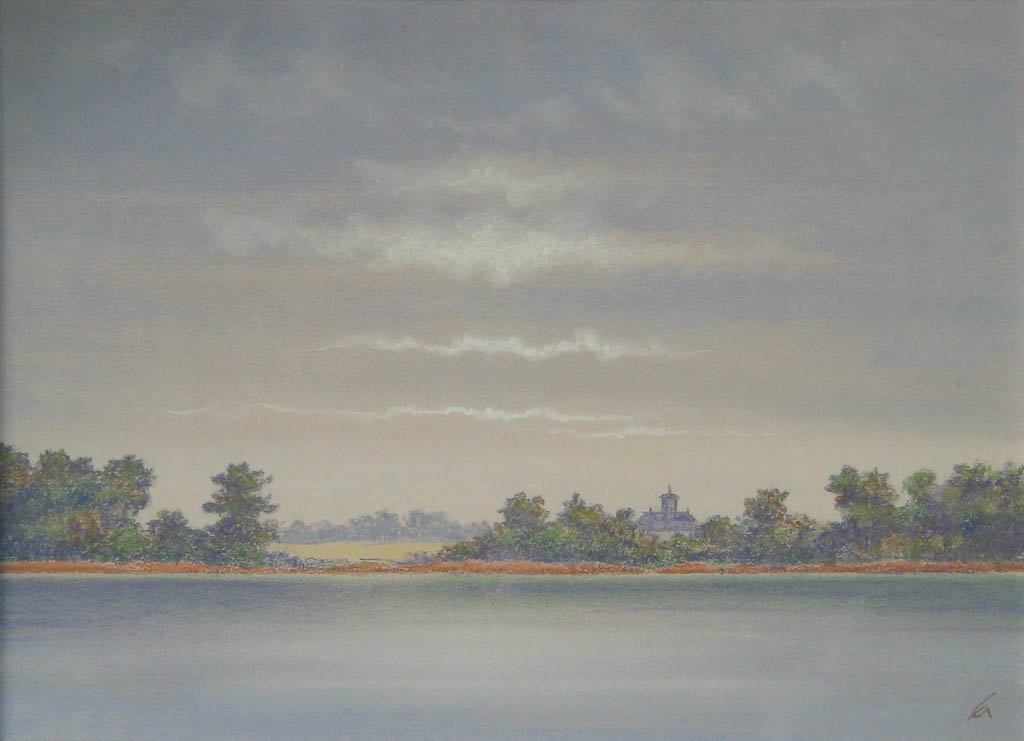
Church of Wuthenow
Red chalk
Red chalk is particularly suitable for fine line drawings, portraits, nude drawings, and figurative representations. Red chalk is a mineral mixture of clay and hematite (Fe2O3), an iron oxide mineral.
Incidentally, the mining of red chalk is one of the earliest mining activities known to humans. The use of red chalk in prehistory can mainly be assumed in rituals (burial rituals) and cave painting, as well as for body painting and later for painting ceramics. In some indigenous peoples of Africa, red chalk is in use to the present day. Himba women from a pastoral tribe in Namibia still use a mixture of ground red chalk and animal fat for personal body care.
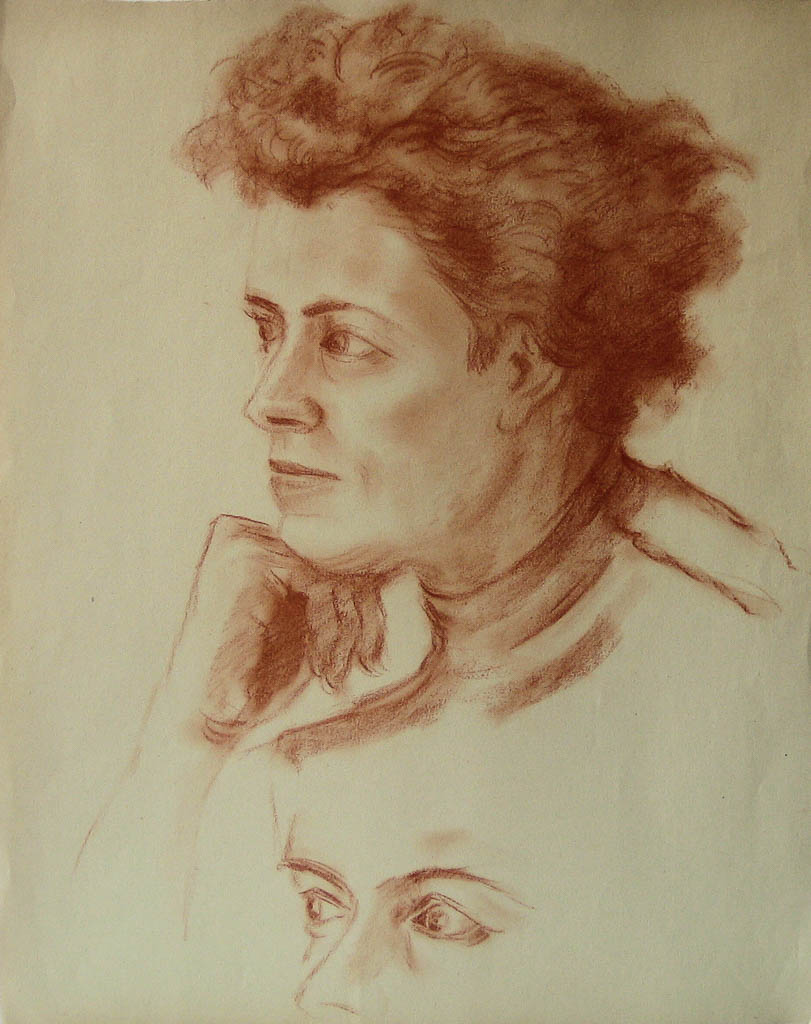
Study
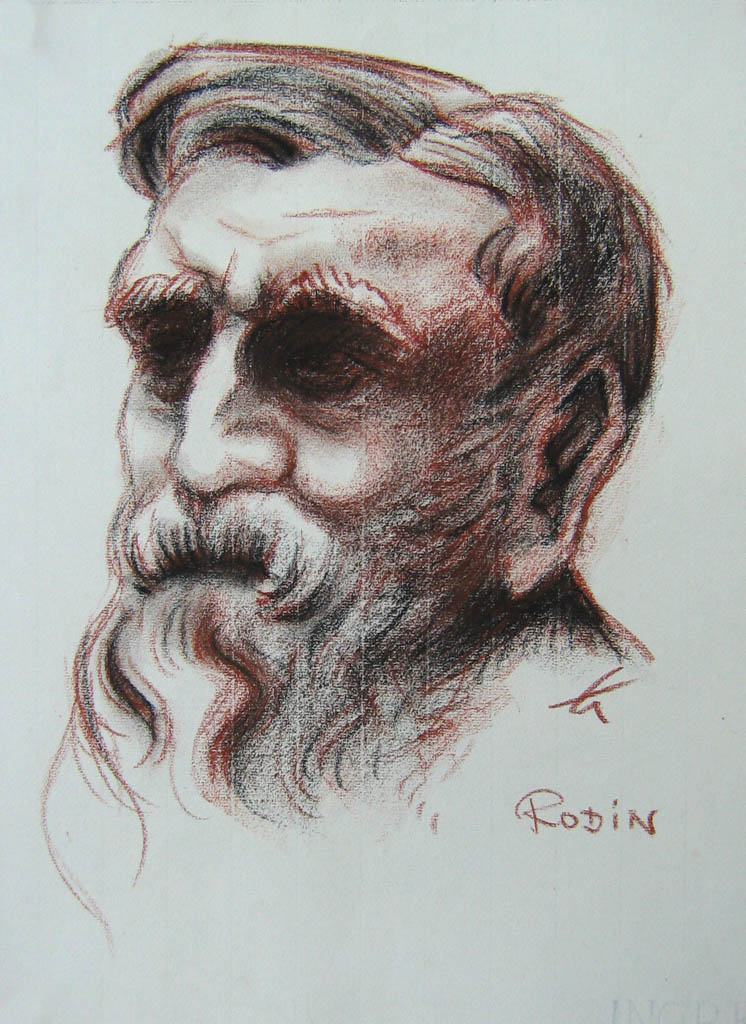
„Rodin“
